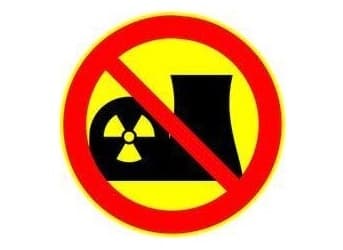In a word, expensive.
Platts reports that electricity prices in California jumped 70% during the first half of 2013, year-on-year. Much of the increase apparently related to shut-down of the San Onofre nuclear generating station.
Power prices in the "Southern California" grid affected by the San Onofre outage surged by $4.29 per megawatt hour. Compared to an overall decrease of $3.65 per megawatt hour in neighbouring and unaffected grids like San Diego.
The rising prices in the Southern California zone look to be a direct result of the lost nuke. The California Independent System Operator Department of Market Monitoring reports that power imports to this zone have been rising to fill the gap. Causing "congestion" on this grid during 51% of operating hours.
Related article: One Step Closer to Fusion Power
Residents here however, asked to have it this way. The San Onofre nuclear plant was shut down in early 2012 after premature wear was discovered on some of its tubing. The plant's operator, Southern California Edison, had been trying to re-start the facility since. But protests from local communities had delayed the process.
Edison gave up on a re-start in June. After Friends of the Earth won a decision with the Atomic Safety and Licensing Board saying that an adjudicatory public hearing would be needed before the facility could operate again.
Amid the protest, the plant will now be retired completely. Causing the results noted above.
Interesting to see just how much going non-nuclear can cost.
Here's to keeping the lights on,
By. Dave Forest



















SDG&E owns 20% of San Onofre:
http://www.sdge.com/san-onofre-nuclear-generating-station
Germany (where it's not even sunny) has shattered records in Solar Energy production; producing the equivalent of 30 nuclear power plants!
Some of the success is in individual homes and businesses installing their own roof-top solar panels.
And as far as nuclear energy in California being expensive, can you imagine the cost to health and property had San Onofre had an accident?
Californians did the right thing.
Another results of shutting down the 8 nuclear plants? Germany is completing construction of a 2GW brown coal plant, the dirtiest, most environmentally-damagine source of energy production (well, tar sands are in the running as well). Coal burning kills thousands every year. Nuclear ... zero, in all the years it has been operating.
True, switching from long time, well established power sources will require solving new grid/distribution problems, but localized solar also has some big grid advantages. Using the power in the building where it was generated- it doesn't get any more efficient than that.
If a nuclear/coal/hydro/whatever plant is scheduled to close and this is know enough in advance additional capacity can be developed.
This is not what a world without nuclear would look like. This is what happens when a grid has to scramble for supply.
The Leak at San Onofre was well within safety limits (even those imposed by the strange regulations prompted by LNT) and even if the tubes failed completely would not have physically harmed anyone. The basic case against Nuclear power generation is that it is uniquely dangerous. Movies, cartoons and other memes tell us this. But the history is that it is the safest industry ever created by humans. Bar none. Using well researched science, not the rantings of people opposed.
So, why use this? Because, cheap power is the best defense against poverty. Power should be cheap.
Since September last year, solar units above 10 MW would have to sell their power at market price, without subsidies. Since then, none has been built. So all the unit that have been built have a guaranteed selling price, even when their production makes the market prices go negative, resulting in a tax for each KWh sold at 53 Euro cent that is higher that the full electricity price in a lot of the US. And it will be 60 Euro cent next year.
Nuclear power is not safe or cost effective:
Fukushima, Chernobyl, Davis Besse, Three Mile Island, Crystal River, and dozen of other nuclear accidents and plant failures. Fukushima costs are over $500 billion, Chernobyl costs are over $800 billion, Three Mile Island costs over $20 billion, etc.
Decommissioning costs are in the billions per reactor.
Operating nuclear plants are now being shutdown because they are not cost effective - see Kewaunee and Vermont Yankee nuclear plants.
http://en.wikipedia.org/wiki/Kewaunee_Power_Station
550 MW plant shut down after its license was extended to 2033 because the power it produced was too expensive to compete.
Then of course there was the Crystal River nuke in Florida that shut down because it was too expensive to bother repairing, and the costs wouldn't be recouped from sales:
http://en.wikipedia.org/wiki/Crystal_River_3_Nuclear_Power_Plant
Do your homework next time before deciding that one data point makes a trend, especially when there are so many others available in the lay press, let alone trade publications, that say pretty much the opposite of the point you're trying to make.